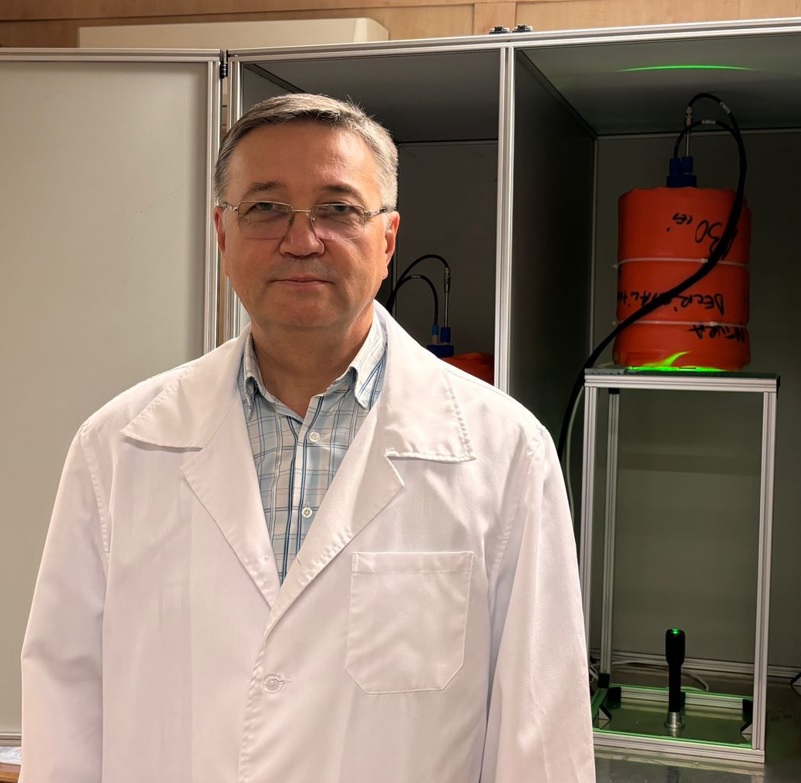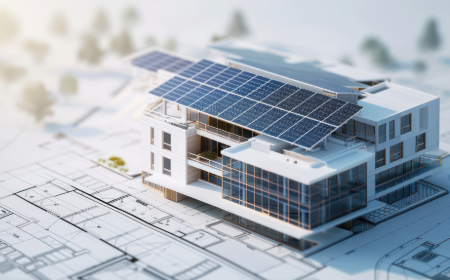Community solar: Evanstonians are helping to flip the switch to renewable energy – Evanston RoundTable
If you live in Evanston and get an electric bill from ComEd, there Is an easy way to go solar and contribute to a shift away from climate-heating carbon emissions in Illinois. There are no upfront costs. You don’t need a sunny rooftop. You can live in a condo, and you can even rent.
How is that possible? Subscribe to a solar farm.
There are now 625 residential ComEd customers in Evanston who subscribe to solar farms, an arrangement commonly called community solar. While still a small percentage of Evanston’s residential customers, the number of local participants is trending up. Across ComEd’s entire service area, about 25,000 residences subscribe to community solar, according to a ComEd spokesperson.
What is community solar?
It took legislation at the state level to make community solar a real option in Illinois.
The 2016 Future Energy Jobs Act, 2021 Climate and Equitable Jobs Act and state regulations created a variety of incentives, subsidies and mandates that promote construction of solar farms and require that electric utilities accept the electricity these farms generate.
The Citizens Utility Board, which was founded in 1983 to advocate for the rights of utilities customers across Illinois, explains how the resulting community solar program works: “ComEd customers who participate subscribe – at a discounted rate – to a portion of the energy output of a Community Solar provider’s large, offsite solar farm. Each month, those participants then get credits on their ComEd bills for the amount of power generated by their subscription at the solar farm.”
The solar farm owner charges the subscriber for these credits at a discount (usually 10–20%), saving them money overall for the month. The program also guarantees even larger savings for lower-income households, and it makes solar “an option for millions of apartment dwellers and people with shady roofs who in the past simply could never have considered solar power.”
How does community solar cut carbon emissions?
Hal Sprague, a member of the Climate Action Evanston energy team who works in the solar industry, explains it this way: Electricity provided by ComEd (the utility that owns the grid and distributes electricity in northern Illinois) is produced from three main sources: nuclear power, fossil fuels (natural gas and coal) and renewables (wind and sun). Burning fossil fuels releases climate-heating greenhouse gasses and other pollutants into the atmosphere, so we need to phase it out – fast.
Subscribers to solar farms contribute to this transition by increasing the portion of the electricity “pie” coming from renewable sources, which in turn reduces the portion coming from fossil fuels, Sprague explains. In other words, by subscribing, “You’re helping the state of Illinois eliminate the use of fossil fuels for making electricity.”
T. Manning, another member of the CAE energy team and community solar advocate, is gearing up with Sprague and others to offer presentations to groups around town (see below for contact information).
“It’s a hard thing to explain,” Manning said, “but once people hear it, they ask themselves, why didn’t I do this five years ago?”
No downside
Manning subscribed to community solar two years ago through a company called NexAmp. His account is associated with a solar farm in Kane County, west of Chicago. Credits go up and down over the course of the year, depending on hours of sunlight, so they cover more of the electricity supply during the summer than during the winter. Averaged out, “at least three-quarters of the usage in the typical community solar household, or more, is being offset by the production on the farm,” Manning said. “In the case of my household it’s pretty much 100%.”
He still gets a bill from ComEd. “They have to maintain the whole system,” he said. That includes distribution, taxes and fees. But the supply part of the ComEd bill is partly (in his case, almost entirely) offset by the credits from NexAmp. He now gets two bills instead of one (one from NexAmp for the credits, the other from ComEd, where the credits are subtracted).
But it’s well worth that minor hassle, he said. In addition, the cost of credits is discounted 20%, so on his NexAmp bill Manning pays less per kilowatt hour than he would if he were just paying ComEd for his supply.
” data-image-caption data-medium-file=”https://evanstonroundtable.com/wp-content/uploads/2024/06/CommunitySolarBillingCUBS-300×240.jpg” data-large-file=”https://evanstonroundtable.com/wp-content/uploads/2024/06/CommunitySolarBillingCUBS-1024×818.jpg” tabindex=”0″ role=”button” src=”https://evanstonroundtable.com/wp-content/uploads/2024/06/CommunitySolarBillingCUBS-1024×818.jpg” alt=”Sample bills for community solar subscriber (one bill without, two bills with a subscription).” class=”wp-image-368021″ srcset=”https://evanstonroundtable.com/wp-content/uploads/2024/06/CommunitySolarBillingCUBS-1024×818.jpg 1024w, https://evanstonroundtable.com/wp-content/uploads/2024/06/CommunitySolarBillingCUBS-300×240.jpg 300w, https://evanstonroundtable.com/wp-content/uploads/2024/06/CommunitySolarBillingCUBS-768×614.jpg 768w, https://evanstonroundtable.com/wp-content/uploads/2024/06/CommunitySolarBillingCUBS-400×320.jpg 400w, https://evanstonroundtable.com/wp-content/uploads/2024/06/CommunitySolarBillingCUBS-706×564.jpg 706w, https://evanstonroundtable.com/wp-content/uploads/2024/06/CommunitySolarBillingCUBS.jpg 1200w” sizes=”(max-width: 1024px) 100vw, 1024px”>
Saving emissions and money
Matt Cotter, co-chair of the Environment Board, subscribed to solar in November 2022 through Ampion. The farm he is assigned to is in Rockford. His motivation is simple: “to get more renewable energy.”
In an email, he stressed how easy the process has been.
“I signed up, turned on autopay, and haven’t touched it since, other than checking to see my CO2e savings and the energy production allocated to our account,” he said.
So far, he figures he’s saved 10,671 pounds of carbon emissions.
“We also save a nominal amount of money on our energy bills,” he added. “I would absolutely recommend it.”
His savings in carbon emissions are about in line with what the CAE energy team estimates for a typical community solar household. Over 20 years, they calculate, a household “can expect to lower its greenhouse-gas emissions by about 219,400 pounds of carbon-dioxide equivalent. That’s roughly the same as 263,280 miles of driving” (in a conventional gasoline-powered car).
They also estimate that, assuming a 3% annual increase in the cost of electricity, that same household will save $2,700 in electricity costs over the same period.
” data-medium-file=”https://evanstonroundtable.com/wp-content/uploads/2023/04/IMG_5621-e1682015953154-300×178.jpeg” data-large-file=”https://evanstonroundtable.com/wp-content/uploads/2023/04/IMG_5621-e1682015953154.jpeg” tabindex=”0″ role=”button” src=”https://evanstonroundtable.com/wp-content/uploads/2023/04/IMG_5621-e1682015953154.jpeg” alt class=”wp-image-247882″ srcset=”https://evanstonroundtable.com/wp-content/uploads/2023/04/IMG_5621-e1682015953154.jpeg 545w, https://evanstonroundtable.com/wp-content/uploads/2023/04/IMG_5621-e1682015953154-300×178.jpeg 300w, https://evanstonroundtable.com/wp-content/uploads/2023/04/IMG_5621-e1682015953154-400×237.jpeg 400w” sizes=”(max-width: 545px) 100vw, 545px”>
Combining community solar with rooftop panels
A longtime advocate for solar, Sprague installed photovoltaic panels years ago on his garage roof – the one area with enough sunlight; it was a manageable investment at the time.
They generate up to 20 kWh on a sunny day. He uses closer to 10 or 12 kWh. When there’s an excess, it goes back into the grid, and he receives credit for it on his monthly bill from ComEd. This means that, in the summer, some monthly bills are $0.
Now that he has a plug-in hybrid car, the panels don’t cover all his electricity usage. A community solar subscription, through a company called Solstice, helps fill the gap. He is also signed up with ComEd for real-time pricing, which means he is charged a different rate by ComEd (for any electricity they supply) depending on the hour of the day. The electricity he uses later at night is cheaper than in the middle of the day, so he tries to defer some activities to the cheaper time period. Anyone can combine the different programs.
Bumps in the road, but still ‘a no-brainer‘
Our household subscribed to community solar through Clearway in December 2020, and in May 2021 we were assigned to a solar farm in Kankakee County, south of Chicago.
Like other early adopters, we’ve had to be patient at times – first as we waited for the farm to be operational and then when it was out of service for a period last year.
We put our two bills on autopay, but when we do check, the accounting can be hard to figure out. Initially, that was because credits were subtracted from our ComEd bill at least a month or two after we paid Clearway for them. This year, although the farm has been cranking out electricity and feeding it into the grid, credits haven’t appeared on our ComEd bill since January.
It turns out this has been a problem for all community solar subscribers in ComEd territory, and the confusion it has created was the subject of a June 24 story in the Chicago Tribune. A ComEd spokesperson wrote in an email, “We are aware of this issue and are working to correct it as soon as it is possible; affected customers have been informed that they should begin to receive catch-up credits in their July bills.”
Assuming this gets ironed out soon, CUB is on it. Community solar providers are sending reassuring messages to customers, and several have confirmed they continue to sign up new subscribers.
There’s been no downside to being a community solar subscriber. By January the Kankakee farm we’re subscribed to had produced 6,465,371 kWh of electricity, the equivalent of 10,899,652 miles driven by a gasoline-powered car, according to Clearway. Our household’s share of that is 16,525 miles.
For those who want to contribute to the shift away from fossil fuels and can manage it, rooftop solar panels are still No. 1, Sprague said.
“That actually does put the power into your own house. But 80% of the people that might want to do that can’t, in Evanston, because of trees, money, lots of things,” he said.
So next best is community solar, Sprague said: “You pay nothing up front, you pay nothing to get out of it, you save money. It’s a no-brainer.”
On sweltering summer days, when we’re reminded of the consequences of burning fossil fuels, knowing we are contributing to the transition to clean, renewable energy can be a cool thought.
Want to learn more? Get in touch with the Climate Action Evanston energy team. They are ready to talk to “any group that wants to listen.” Contact T. Manning at en****@cl*******************.org
Resources
Illinois Power Agency was established under Illinois law in 2007 “to provide a clean, reliable, equitable, and cost-effective energy future for residents and businesses across Illinois.”
Illinois Shines, which “supports the development of new solar energy generation in Illinois through on-site solar and community solar projects.” The section on community solar suggests questions to ask if you’re thinking of subscribing.
Illinois Solar for All, which works “to provide access to solar energy benefits that result in measurable savings for low-income households and communities.”
Citizens Utility Board explains community solar and lists providers. They’ve summarized offers from a number of companies as of March 2024 in a comparison chart.
Climate Watch is a series of occasional articles about what climate change means for Evanston and what we are doing locally to make a difference.







